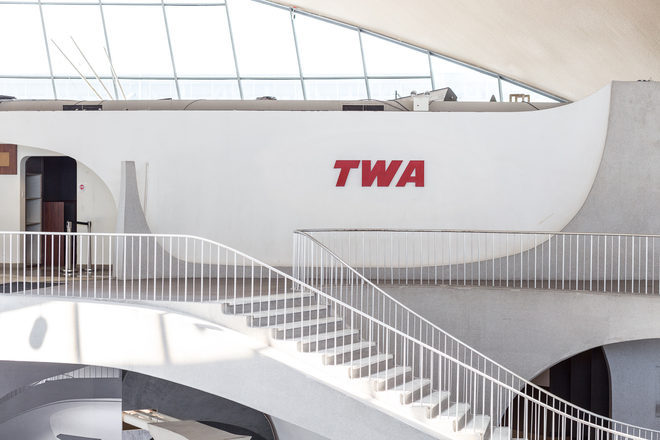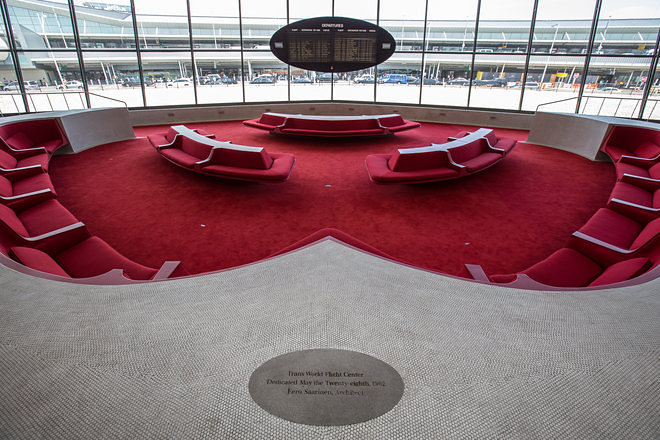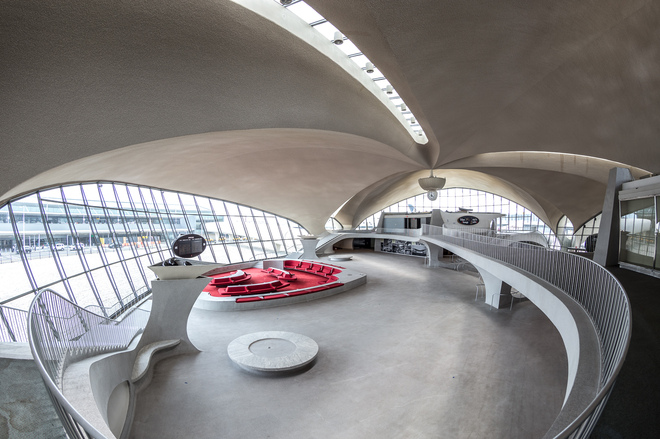[All photos by Max Touhey.]
Eero Saarinen’s 1962 TWA Flight Center is a modernist iconoclasm captured in time. The building exudes pure, Beaux Arts symmetry, and the terminal is designed in a way that the perimeter is for humans, something that is often not seen in today’s airports.
Completed posthumously, this architectural marvel marked a distinctive shift in the history of travel by air: the jet-age to the golden age of flying. The opening of the terminal, with its charming, curvy interior, had obviously unintentionally coincided with the fact that air travel was no longer restricted to flyers by economic class or security concerns.
The building was obviously made for the wealthy, with its sweeping stone staircases seemingly more suitable for the flourish of a ball gown than the loud clanks of a suitcase being dragged up it. Bird-like in shape, it’s indeed a special place for both midcentury design lovers and architecture aficionados, as well as photographers.
“You can stand in 100 different places and still be in awe. The interplay of curves is really fascinating and changes dramatically depending where you’re looking from,” said Max Touhey, photographer.
Closed to the public since 2001, the TWC Flight Center can be seen annually during Open House New York, but not for long. This pristinely preserved time capsule was given national landmark status in 2003, but has plans to soon be redeveloped into a boutique hotel.
Any potential design and structural changes are unclear at this point, however it’s promising that many of the buildings interior features will likely be kept for their charm and their existing uses on the hospitality front.
Still, it will never be as it is right now, which is why a team of digital scanning experts from Walters and ChronoPoint spent a week in mid-June recording every curve, bend, window, and facade of Saarinen’s last work. Returning to their Florida lab, the team of experts is now making a digital 3D model of the TWA Flight Center. In many ways, this scanning and education project will help to preserve and remember the nonpareil building.


